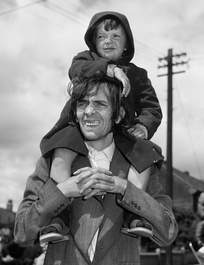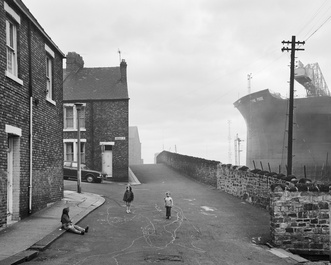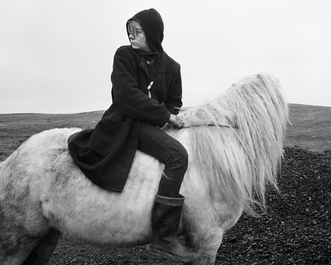With his empathetic, but above all honest documentary eye, Chris Killip (UK, 1946-2020) is regarded as one of the most influential post-war British photographers. He spent long periods in the North of England in the 1970s and 1980s, a turbulent period for this region, with one large factory after another being forced to close, leading to massive unemployment and poverty. Killip captured the impact of economic decline like no other, turning his camera (and his heart) on the working class, the people hardest hit by the economic upheaval.
This exhibition is a tribute to Killip, a celebrated photographer who remains relatively unknown to the general public. With more than a hundred works, this retrospective is the most comprehensive survey of his work to date, including previously unseen photographs.
Killip established long-term relationships with the communities he photographed, often living among them for long periods. He used his keen powers of observation to record the lives of ordinary people in an unsparing but sympathetic way. This approach was clearly apparent for the first time in his long-running series Isle of Man (1970-73), for which he returned to his birthplace. With a combination of frankness and tenderness, he documented how the original islanders, mostly farmers and fishermen, felt threatened by newcomers who made their money through financial institutions.
After moving to Newcastle in 1975 to take up a Northern Arts fellowship at British Gas, Killip continued to photograph in his spare time, with places such as Skinningrove, Durham and Middlesbrough catching his attention. He witnessed the solidarity among shipbuilding and coalmining communities and the importance of the industries they relied on. He stayed long enough to see them rapidly lose everything through deindustrialisation.
His work is considered one of the most important visual records of Britain in the 1980s. His photographs tell the story of the people with no control over their destiny as global economic developments destroyed local communities and their livelihoods. Killip collected this body of work in the book In Flagrante (1988), considered one of the most important photography books ever and a great source of inspiration for subsequent generations of photographers.
Exhibition and publication
The exhibition was curated by Tracy Marshall-Grant and Ken Grant and was produced by the Photographers’ Gallery in London. It was subsequently shown at the Baltic Centre for Contemporary Art in Gateshead and at the Deutsche Börse Photography Foundation in Frankfurt. The Fotomuseum Den Haag is the last venue. The exhibition is accompanied by the publication Chris Killip 1946-2020 with texts by Ken Grant, Gregory Halpern, Lynsey Hanley, Amanda Maddox and Brett Rogers. It is published in association with Thames & Hudson and designed by Niall Sweeney and Nigel Truswell of Pony Ltd.
Chris Killip
Chris Killip was born on the Isle of Man. From 1991 to 2017 he was professor of visual and environmental studies at Harvard University. His work is represented in the collections of the Museum of Modern Art in New York, the Victoria and Albert Museum in Londen and the Stedelijk Museum in Amsterdam, among others. He received the Henri Cartier-Bresson Award in 1989 and was nominated for the Deutsche Börse Photography Foundation Award in 2013.
The exhibition is curated by Ken Grant and Tracy Marshall and produced in collaboration with The Photographers’ Gallery, London and Fotomuseum Den Haag.
With thanks to the Martin Parr Foundation and the Chris Killip Photography Trust











